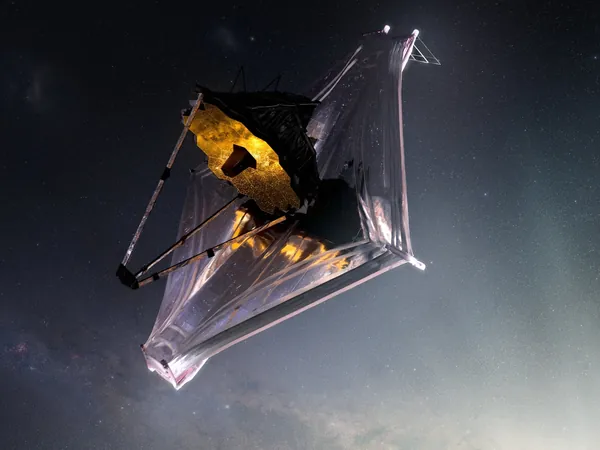
Ancient Fossils Unveil the First Known Prehistoric Arms Race
2025-04-14
Author: Emma
A Battle for Survival Over 500 Million Years Ago
Imagine an underwater world where life was a constant battle for survival over 500 million years ago, in what is now South Australia. Scientists have uncovered a new chapter in Earth’s history, revealing the earliest known instance of an 'evolutionary arms race' among ancient marine creatures.
Groundbreaking Research Reveals Prehistoric Combat
Recent research, published in *Current Biology*, delves into how ancient animals adapted and evolved as fearsome predators emerged. For the first time, fossil evidence indicates that prey didn’t just succumb; they fought back, triggering a relentless cycle of evolution.
Fossil Findings: A Glimpse into Cambrian Life
Led by a team from the American Museum of Natural History, along with collaborators from Australia, researchers examined over 200 fossils from a minute species known as Lapworthella fasciculata, which roamed the seas about 517 million years ago during the Cambrian period. These fossils unveiled pristine holes, too uniform to be caused by natural wear, suggesting a predator with specialized drilling techniques was at play.
Russell Bicknell, the study’s lead author, stated, 'This is the first time we’ve documented prey directly responding to predation and predators adjusting in turn.' The ancient ocean floor was alive with a fierce game of evolutionary cat-and-mouse.
The Cambrian Explosion: More Than Just Growth
The Cambrian period, known for its rapid diversification of life, has long puzzled scientists. A prevailing theory posits that the rise of advanced predators triggered a cascade of adaptations in their prey, leading to thicker shells and more mobile bodies, all chronicled in the fossil record.
While evidence of this phenomenon was limited, this study marks a pivotal turning point with direct fossil proof. The examination revealed not only the existence of drilled shells but also a gradual thickening of those shells, perfectly timed with an increase in predation.
The Endless Cycle of Evolutionary Arms Race
Bicknell’s findings strongly suggest that as predators evolved sharper tools for attacking, prey defenses became increasingly robust. This critical evolutionary moment exemplifies how the dynamics of predation and survival shaped the trajectory of early animal ecosystems.
More Than Just Fossils: Insights Into Early Ecosystems
This discovery transcends dusty fossils; it illuminates the complex web of life that emerged in ancient oceans. As different species carved out ecological niches, the ongoing struggle between predator and prey drove the evolution of varied life forms—from scavengers to filter feeders.
The concept of an evolutionary arms race parallels how nations develop advanced technology in response to threats. In nature, the 'weapons' are biological adaptations that evolve over time, with survival paving the way for innovation.
Unlocking Secrets of Earth's Evolutionary Past
This research not only provides insight into ancient survival strategies but also captures the essence of natural selection during one of Earth's most crucial epochs. Scientists now better understand how basic survival instincts spurred significant changes, paving the way for the evolution of more complex life forms, including fish, reptiles, birds, and eventually mammals.
By illuminating the dynamics of ancient predator-prey relationships, this study fills a crucial gap in our understanding of early animal evolution. It's more than just a story of ancient shells—it's a window into the foundational processes that shaped life's biodiversity on Earth.









 Brasil (PT)
Brasil (PT)
 Canada (EN)
Canada (EN)
 Chile (ES)
Chile (ES)
 Česko (CS)
Česko (CS)
 대한민국 (KO)
대한민국 (KO)
 España (ES)
España (ES)
 France (FR)
France (FR)
 Hong Kong (EN)
Hong Kong (EN)
 Italia (IT)
Italia (IT)
 日本 (JA)
日本 (JA)
 Magyarország (HU)
Magyarország (HU)
 Norge (NO)
Norge (NO)
 Polska (PL)
Polska (PL)
 Schweiz (DE)
Schweiz (DE)
 Singapore (EN)
Singapore (EN)
 Sverige (SV)
Sverige (SV)
 Suomi (FI)
Suomi (FI)
 Türkiye (TR)
Türkiye (TR)
 الإمارات العربية المتحدة (AR)
الإمارات العربية المتحدة (AR)